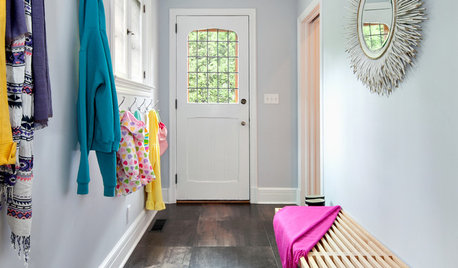Is it OK to (wet) sand in between stain coats?
j_dubyak
16 years ago
Related Stories

KITCHEN CABINETSKitchen Cabinet Color: Should You Paint or Stain?
Learn about durability, looks, cost and more for wooden cabinet finishes to make the right choice for your kitchen
Full Story
HOUSEKEEPINGHow to Clean Grout — Stains and All
If your grout is grossing you out, this deep-cleaning method will help it look new again
Full Story
KITCHEN COUNTERTOPS7 Low-Maintenance Countertops for Your Dream Kitchen
Fingerprints, stains, resealing requirements ... who needs ’em? These countertop materials look great with little effort
Full Story
REMODELING GUIDESWisdom to Help Your Relationship Survive a Remodel
Spend less time patching up partnerships and more time spackling and sanding with this insight from a Houzz remodeling survey
Full Story
MUDROOMSHouzz Call: We Want to See Your Hardworking Mudroom
The modern mudroom houses everything from wet boots to workstations. Proud of your space? Inspire us with your photos and tips
Full Story
CURB APPEALWhen to Paint Your House Brown
Nature loves brown, from rich soil to sunlit sand, and so do home exteriors with a traditional or Craftsman bent
Full Story
GREAT HOME PROJECTSHow to Refinish a Wood Deck
Keep your deck looking its best — and save feet from splinters — by applying a new stain and sealant every year or so
Full Story
KITCHEN CABINETSKeeping Cabinet Color on the Down Low
Give just base cabinets a colorful coat for a kitchen sporting character and a spacious look
Full Story
KITCHEN DESIGNKitchen Counters: Durable, Easy-Clean Soapstone
Give bacteria the boot and say sayonara to stains with this long-lasting material that's a great choice for kitchen and bath countertops
Full Story
REMODELING GUIDESPro Finishing Secret: Aniline Dye for Wood
Deeper and richer than any stain, aniline dye gives wood stunningly deep color and a long-lasting finish
Full StoryMore Discussions











sombreuil_mongrel
kmealy
Related Professionals
Middletown Cabinets & Cabinetry · South Gate Cabinets & Cabinetry · Holliston Carpenters · Canton Flooring Contractors · Lakeway Flooring Contractors · Louisville Flooring Contractors · Plainfield Flooring Contractors · West Bend Flooring Contractors · Whittier Flooring Contractors · Carlsbad Furniture & Accessories · Easton Furniture & Accessories · Fort Wayne Furniture & Accessories · Eureka Furniture & Accessories · Kansas City Furniture & Accessories · La Mirada Furniture & Accessoriesj_dubyakOriginal Author
furnone
furnone
j_dubyakOriginal Author
Stella